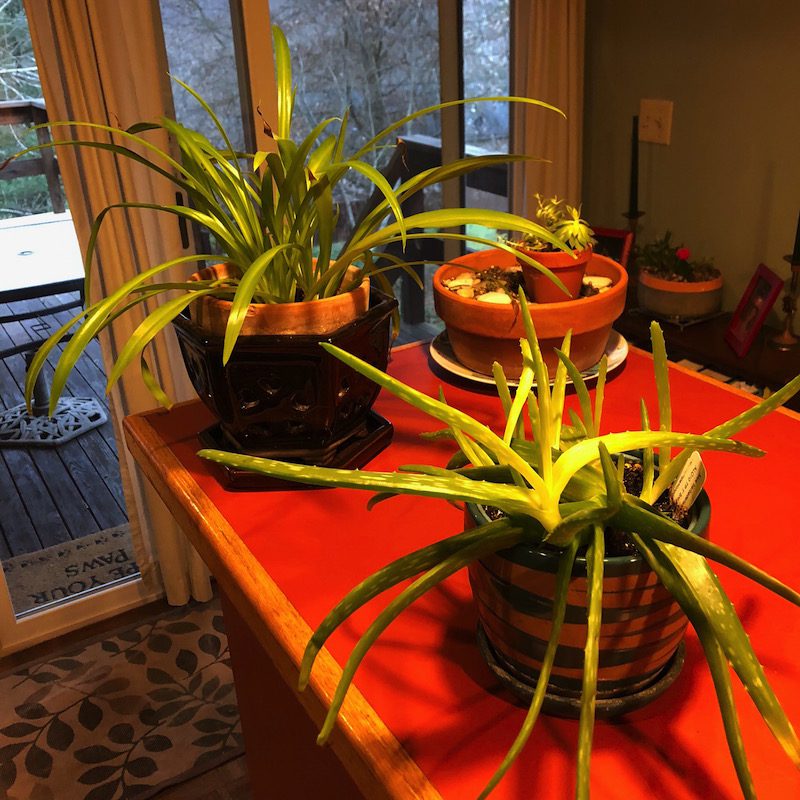You’re Not Helpless in Countering Dry Indoor Air in the Winter

Winter doesn’t have a lot of attractions if you’re not a fan of sledding, skiing or snowmen, but when it comes to indoor comfort, the reduced humidity is a big plus. However, even that benefit isn’t unalloyed, with dry indoor air carrying its own set of disadvantages.
Cool air holds less moisture than warm air, and forced-air heating tends to dry out indoor air even further. This is why many homeowners resort to mechanical humidification in the winter, either in certain rooms or throughout the house.
What’s Wrong With Dry Air?
• It’s just not that comfortable. Dryer indoor air can dry the skin, cause cracking in your lips, and bother nasal passages. You can get briefly painful shocks from static electricity that’s common in dry environments. Dry air feels cooler than moist air, which helps explain why a hard-to-shake chilliness is common in homes with particularly dry air.
• Dry air can cause adverse health effects. In dry air, allergens, viruses and other harmful contaminants remain suspended in the air longer than they would in moist air, where water droplets pull particulates to the ground. Floating in the air, contaminants can more readily invade nasal passages and the throat. This makes airborne transmission of disease and allergens more likely in dry environments, an especially serious concern during the continuing Covid-19 pandemic.
• Dry air can hit you in your household budget. As stated, dry air tends to feel cooler than moist air. Home occupants react to this cooler feeling by turning up the heat, which in turn raises your heating bills.
• Dry air over an extended period can damage household furnishings and fixtures. Tables, paneling and other wood furnishings may warp and crack after continued exposure to dry air that extracts the moisture from them.
A Whole-House Solution to Dry Air
Homeowners concerned about interior air that’s too dry, either because of comfort, health or other concerns, should consider a whole-house solution. Quite effective whole-house humidifiers are available on the market. They’re attached to and work with the home’s central forced-air heating system to add moisture to the air, in the same way that whole-house dehumidifiers remove moisture during the cooling season. As air passes through the HVAC system, the whole-house humidifier adds the amount of moisture that you’ve designated in the appliance’s hygrometer. These systems connect to household plumbing, so there’s no need to add water manually.
Don’t Forget the Old-Fashioned Solution
If you can’t afford a whole-house humidifier, or feel that the dry-air problem in your home is localized to certain rooms or floors, you can go the traditional route of using portable or room humidifiers in those areas.
Maintain Your Whole-House Humidifier
If you want your whole-house humidifier to work optimally, some simple maintenance steps are recommended. They include:
• Every few years, unless regular service is scheduled, certain components of the whole-house humidifier may need replacement, including those that control the flow of water. Mineral or scale deposits can interfere with proper operation of these components. These should be inspected regularly, and if necessary cleaned.
• Similarly, the water distribution tray, feed tube and water tray should be removed and cleaned regularly to ensure proper operation and prevent the spread of mold. In some systems, the water panel may need to be replaced periodically.
• The drain tube should be inspected regularly for accumulation of dirt and debris, evidence of strain and wear, and sufficient slope to drain residual water. If the drainage system is blocked or not draining properly, water can spill in the home, damaging building materials, fixtures and furnishings.
A competent and trusted HVAC technician should be able to handle all of these routine maintenance steps quickly and at a reasonable price.
